What is an SVG file?
Office 365: Day by day Tasks Made Simpler
September 9, 2021three Suggestions To Hire The Best Computer Repair Company
September 9, 2021An SVG file is a Scalar Vector Graphics file that makes use of XML based mostly textual content format for describing the looks of an image. The word Scalable refers to the fact that the SVG will be scaled to different sizes without losing any quality. Text-based mostly description of such files makes them independent of resolution. It is without doubt one of the most used codecs for building a website and print graphics to be able to achieve scalability. The format can only be used for two-dimensional graphics though. SVG files can be viewed/opened in nearly all modern browsers including Chrome, Internet Explorer, Firefox, and Safari.
Transient History
SVG specifications are available as open normal by World Vast Web Consortium (W3C) since 1999. Earlier than this, similar file format specifications in six different formats had been submitted to W3C until 1998. An update was applied to the specifications in 2011 and it was versioned 1.1. In 2016, SVG 2 was revealed as newer model together with options in addition to those in SVG 1.1.
File Format Specs
The SVG Doc Object Model (DOM) lays the foundations for all the specs and interfaces that correspond to the actual sections of the specifications. SVG viewers should implement the SVG DOM interfaces as defined all through the W3C specifications. Its DOM exposes a number of interfaces for various data types and elements.
SVG shapes
SVG has some predefined form parts that can be used by builders:
Rectangle
Circle
Ellipse
Line
Polyline
Polygon
Path
Based mostly on these shapes and specifications, functional areas of SVG are as follow.
Paths – Paths are used to signify easy as well as compound form outlines. Codings are used to define the character of operation. For example, M is used for Move To, L is used for Line To, Z is used to shut a path and so on.
Primary Shapes – Straight-line paths and paths made up of a sequence of connected straight-line segments (polylines), as well as closed polygons, circles, and ellipses could be drawn. Rectangles and round-cornered rectangles are additionally standard elements.
Text – Text representation is expressed as XML character data the place many visual effects could be applied to the text. The specs enable to deal with bidirectional text, vertical text and characters alongside a curved path.
Painting – Shapes might be crammed and/or outlined with a color, a gradient or a sample, permitting the capability to make it opaque or have any degree of transparency. Line-end features resembling arrowheads or symbols appearing at the vertices of a polygon are represented by Markers.
Color – SVG specs permit to use colours to all seen SVG components, either directly or through fill, stroke, and other properties. Completely different color codings can be utilized for specifying like black or blue, hex illustration, decimal or as percentages of the shape RGB.
Gradients and Patterns – Shapes in an SVG file might be stuffed or outlined with stable colors, gradients or repeating patterns.
Filter Effects – Its truly a series of graphics operations that are applied to given source vector graphic to produce modified result.
Interactivity – Customers can work together with SVG files by altering focus, mouse clicks, scrolling or zooming the image. The Interactivity lets SVG images interact with customers in many different ways as aforementioned.
Linking – It’s possible for SVG images to have hyperlinks to other documents. This is achieved via the XML Linking Language or XLink. This permits for creating specific view states which can be used to zoom in/out of a selected space or to limit the view to a particular element.
Scripting – Just like HTML, all features of an SVG document are accessible for manipulation utilizing scripts. The SVG DOM objects provides the guidance for achieving this using SVG aspect and attribute. Scripts are enclosed in script tag components and can run in response to pointer, keyboard or document occasions as required.
Animation – The DOM parts , and allows you to to together with animation for SVG contents. Of course, this is just not achievable without using scripts and built-in timers. These animations will be steady and may be put on loop as well as repeats while at the similar time responding to user events.
Fonts – Text in SVG can reference exterior font files resembling system fonts. In absence of such fonts, textual content in SVG will not be rendered to the output. This could be overcome by incorporating the required glyphs in such a file as a font that is then rendered utilizing the element.
If you cherished this article and you would like to get more info concerning cricut svg please visit our own web-page.

